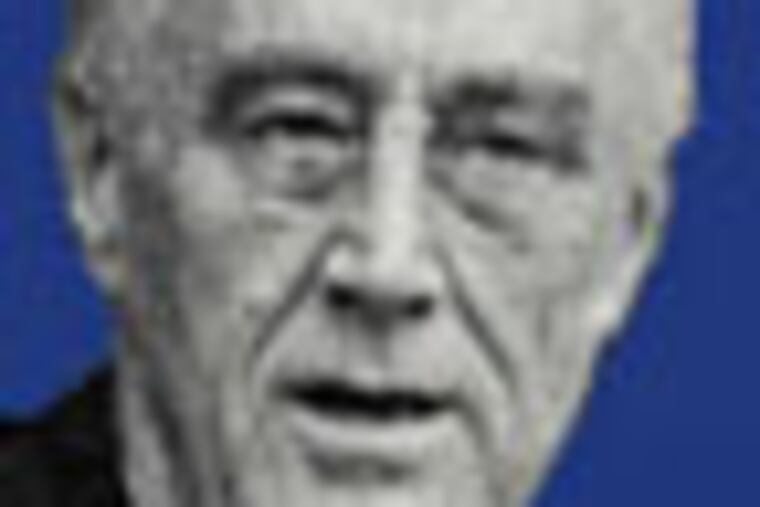A portrait of FDR's last campaign
On July 20, 1944, while on his way by train to observe the Fifth Marine Division's amphibious landing maneuvers at Oceanside, Calif., President Franklin D. Roosevelt suffered a severe attack of congestive heart failure. His son, Jimmy, accompanying him on the trip, reported that "Father lay on the floor of the railroad car, his eyes closed, his face drawn; his powerful torso . . . convulsed as waves of pain stabbed him."

Final Victory
FDR's Extraordinary
World War II Presidential Campaign
By Stanley Weintraub
Da Capo Press. 318 pp. $26
nolead ends nolead begins
Reviewed by Chris Patsilelis
On July 20, 1944, while on his way by train to observe the Fifth Marine Division's amphibious landing maneuvers at Oceanside, Calif., President Franklin D. Roosevelt suffered a severe attack of congestive heart failure. His son, Jimmy, accompanying him on the trip, reported that "Father lay on the floor of the railroad car, his eyes closed, his face drawn; his powerful torso . . . convulsed as waves of pain stabbed him."
FDR was in the 12th year of his presidency and fully intended to run for a fourth term in November. Historian Stanley Weintraub provides a vivid, comprehensive portrait not only of Roosevelt's 1944 election run, but of the American political landscape of the time.
Weintraub, a Delaware resident who is professor emeritus of arts and humanities at Pennsylvania State University, is the award-winning author of more than 50 books of history and biography, including Silent Night (2001) and Pearl Harbor Christmas (2011).
To put the '44 presidential campaign in broader historical perspective, Weintraub meticulously describes the global situation and the American home front in the latter half of 1944: "Much of Europe," he explains, "was still in Nazi hands, and the Japanese controlled a vast swath of the Pacific Rim." U.S. enemies were on the defensive, but victory "was on the still-distant horizon."
In America, citizens were concerned with mundane realities: Gas rationing with speed limits of 35 m.p.h., rationing of butter, beef, bacon, sugar, shoes, sheets, razor blades, whiskey, cigarettes. Money was being made on the gray home front, but there was little to spend it on. And while it was true that Roosevelt wanted keenly to conclude the war and to bring about a more economically robust nation after it, Americans were chafing at the persistent shortages. It was precisely this situation - coupled with the president's increasing frailty - that the Republicans wished to exploit.
Weintraub delves deeply into the politics of this wartime presidential campaign. He informs us of how the relatively unknown Sen. Harry S. Truman of Missouri was chosen despite his own reluctance about his candidacy. The author further remarks that Truman, whom Roosevelt had met only once or twice, was not taken seriously by the press "from Left to Right."
We are introduced to Roosevelt's challenger, the dapper, mustachioed, 42-year-old governor of New York, Thomas E. Dewey. Dewey was, according to Weintraub, unrelentingly focused upon Roosevelt's New Deal affiliations with communists (fallacious) and Roosevelt's tired, worn-out administration with its "system of overlapping agencies" and "political favoritism" in its relations with labor. Dewey's running mate, John W. Bricker, governor of Ohio, even tried to appeal to the laboring class by accusing the CIO labor federation of "buying the president's fourth term with workers' union dues."
Final Victory is filled with the ferocious back-and-forth battles of any hotly run political race - especially a wartime, presidential one. And Weintraub does an amazing job of digging up all the details of this exceptional campaign. But what really propels the book are the colorful, telling stories and anecdotes, often illustrated by political cartoons. Buttoned-up Dewey, for instance, was described by New Republic reporter Richard Strout, Weintraub informs us, as giving a speech that was " 'sonorous, cold perfection . . . possessing all a speaker should have except warmth, humor and fellow feeling.' " Perpetually unsmiling and unwilling to don a sombrero or 10-gallon hat at appropriate campaign stops, Dewey also considered it "absolute torture" to wade into crowds, or to shake hands, as he was anxious about germs. He was, confessed one of his assistants, "cold as a February icicle."Roosevelt, on the other hand, though aristocratic and crippled from the waist down (though this was carefully camouflaged from the public), projected outgoing human warmth and humor; he could leave audiences howling with laughter, as he did after telling his famous story about how his Scotch terrier, Fala, resented Republican claims that FDR had left him behind in the Aleutian Islands and sent a destroyer back to fetch him at considerable cost to the taxpayers.
Some of the stories and anecdotes are not on the humorous side, such as the tale of Truman's keen anxiety when, as he told a confidant, he awoke from a nightmare that Roosevelt had died, and that he, Harry, was now president.
Or when, in July 1944, while visiting Pearl Harbor, Roosevelt was pushed through the Aiea Naval Hospital in his wheelchair and met with patients who had lost arms and legs. A witness observed that the president, "This crippled man on the little wheel chair wanted to show them that it was possible to rise above such physical handicaps. . . . The expressions on the faces on the pillows, as he slowly passed by and smiled, showed how effective was this self-display of crippled helplessness."
As to the election results in this remarkable race - Roosevelt, of course, won a fourth term with a close popular vote, but with an Electoral College landslide: 432 to 99. He was inaugurated on Jan. 20, 1945, turned 63 on Jan. 30, and died of a cerebral hemorrhage on April 12, 1945, in Warm Springs, Ga. His fourth term lasted 83 days.
Well-written and filled with fascinating information, Final Victory wonderfully captures a pivotal moment in America's history.